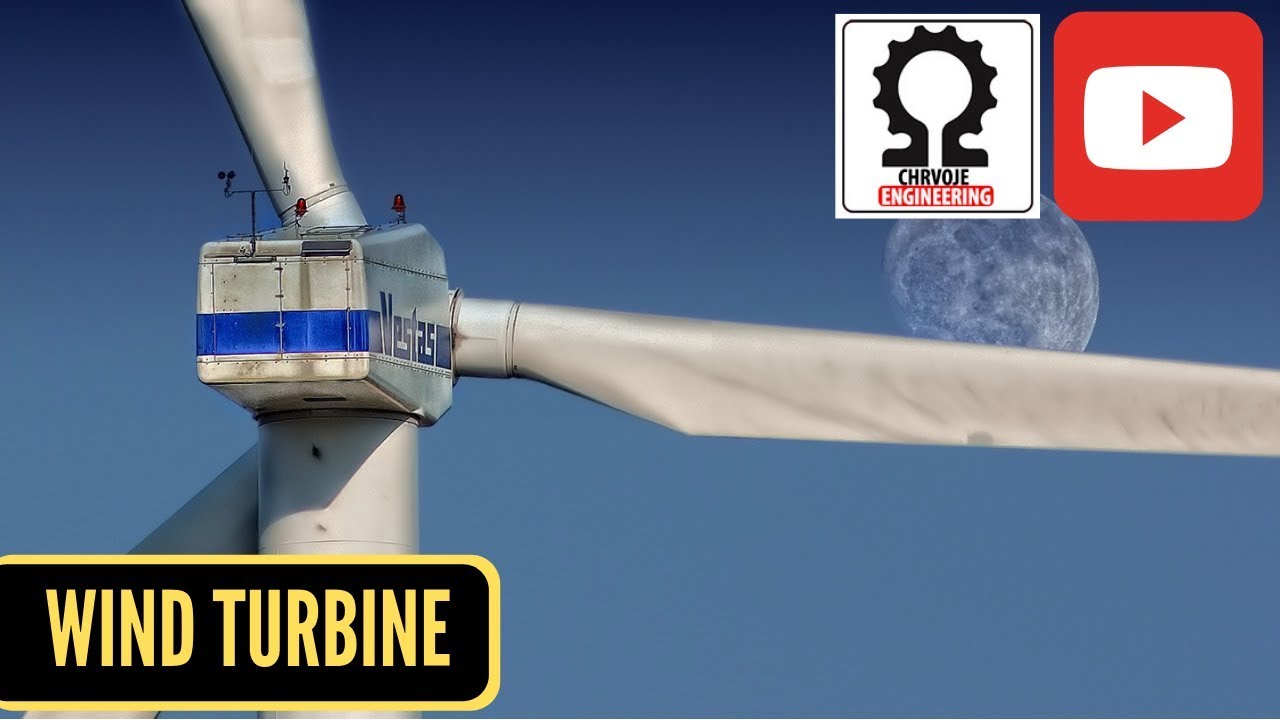Wind Power - IB Physics
Summary
TLDRThis video explains the science and mathematics behind wind turbines, highlighting how they convert the kinetic energy of moving air into electrical power. It covers the basic principles of energy transformation, the advantages and disadvantages of wind turbines, and the factors that impact their efficiency. Key equations are presented to calculate power output, with examples illustrating how wind velocity and turbine design affect energy capture. The importance of placing turbines in areas with consistent high winds is emphasized, showing how even slight changes in wind speed can dramatically affect power generation.
Takeaways
- 😀 Wind turbines convert kinetic energy from wind into electrical energy using a generator.
- 🌍 Wind turbines produce no greenhouse gas emissions, making them an environmentally friendly energy source.
- ⚡ Wind energy is renewable and free, as wind is naturally available where turbines are built.
- 🌀 The main disadvantage of wind turbines is their dependency on wind speed, making energy production inconsistent.
- 🔊 Wind turbines can be noisy, and their appearance may be undesirable to some people, leading to visual pollution.
- 🏙️ Wind turbines require open space for optimal performance, which can be a challenge in urban areas where energy demand is high.
- 💰 Maintenance costs for wind turbines are high, and they can also be damaged during strong winds.
- 🔋 The power output of a wind turbine is calculated by the equation: Power = 1/2 * Area * Density * Velocity^3.
- 🌬️ The velocity of wind significantly impacts power output, with power increasing dramatically as wind speed rises (e.g., tripling wind speed increases power by 27 times).
- 📊 Calculating the kinetic energy of air passing through a turbine involves using mass, velocity, and air density, which can be derived from volume and density equations.
- 🔢 The mass of the air impacting the turbine is determined using the air's density, and the kinetic energy is calculated using the equation KE = 1/2 * m * v^2.
Q & A
What is the role of wind turbines in global energy production?
-Wind turbines currently contribute to about 2% of global renewable energy production, alongside solar power. Although their share is small, their usage is increasing as a source of renewable energy.
How does a wind turbine generate electricity?
-Wind turbines convert kinetic energy from the wind into mechanical energy as the wind makes the turbine spin. This mechanical motion drives a generator, which spins a magnet inside a coil of wire, producing electricity.
What are the main advantages of wind turbines?
-The advantages of wind turbines include no greenhouse gas emissions, renewability, and the fact that wind is a free resource. Additionally, wind power does not require transportation as it is already available at the turbine site.
What are the main disadvantages of wind turbines?
-The disadvantages include their dependence on wind availability, relatively low power output per turbine, noise pollution, aesthetic concerns, limited location options, and high maintenance costs. Additionally, wind turbines can be damaged in high winds.
What does the equation for wind turbine power involve?
-The power generated by a wind turbine is calculated using the formula: P = 1/2 * A * ρ * v³, where P is power, A is the area of the turbine blades, ρ is the air density, and v is the wind velocity.
What is the significance of air density in the power equation?
-Air density (ρ) is crucial in determining the mass of the air impacting the turbine. It directly influences the kinetic energy and, therefore, the power that can be extracted by the turbine.
Why is the length of a turbine blade important for wind turbine calculations?
-The length of a turbine blade determines the radius of the circular area swept by the turbine. This radius is used to calculate the area (A) of the turbine, which is a key factor in determining the power output.
How does wind velocity affect the power output of a wind turbine?
-Wind velocity plays a significant role, as power is proportional to the cube of the velocity. Therefore, even a small increase in wind speed can result in a large increase in power generation.
How is the kinetic energy of air moving through a wind turbine calculated?
-Kinetic energy is calculated using the formula: KE = 1/2 * mv². To find the mass of air, you use the density formula (ρ = m/V), combining it with the volume of the air passing through the turbine to determine the kinetic energy.
In the example problem, how much power is extracted from the air by the wind turbine?
-In the example problem, the power extracted by the turbine is calculated by finding the difference in power before and after the air passes through the turbine. The result is 1.13 megawatts of power extracted.
Outlines

此内容仅限付费用户访问。 请升级后访问。
立即升级Mindmap

此内容仅限付费用户访问。 请升级后访问。
立即升级Keywords

此内容仅限付费用户访问。 请升级后访问。
立即升级Highlights

此内容仅限付费用户访问。 请升级后访问。
立即升级Transcripts

此内容仅限付费用户访问。 请升级后访问。
立即升级5.0 / 5 (0 votes)






